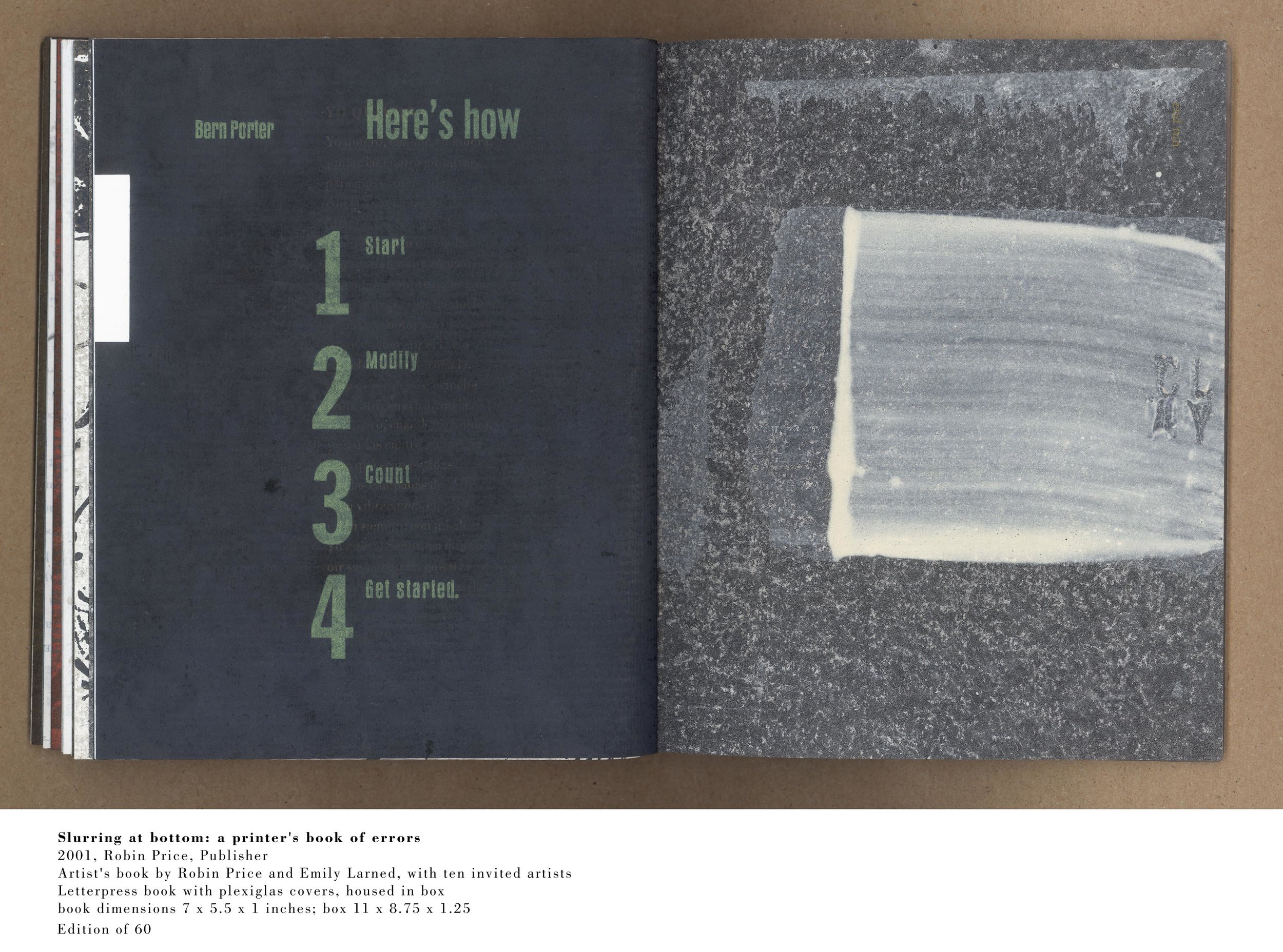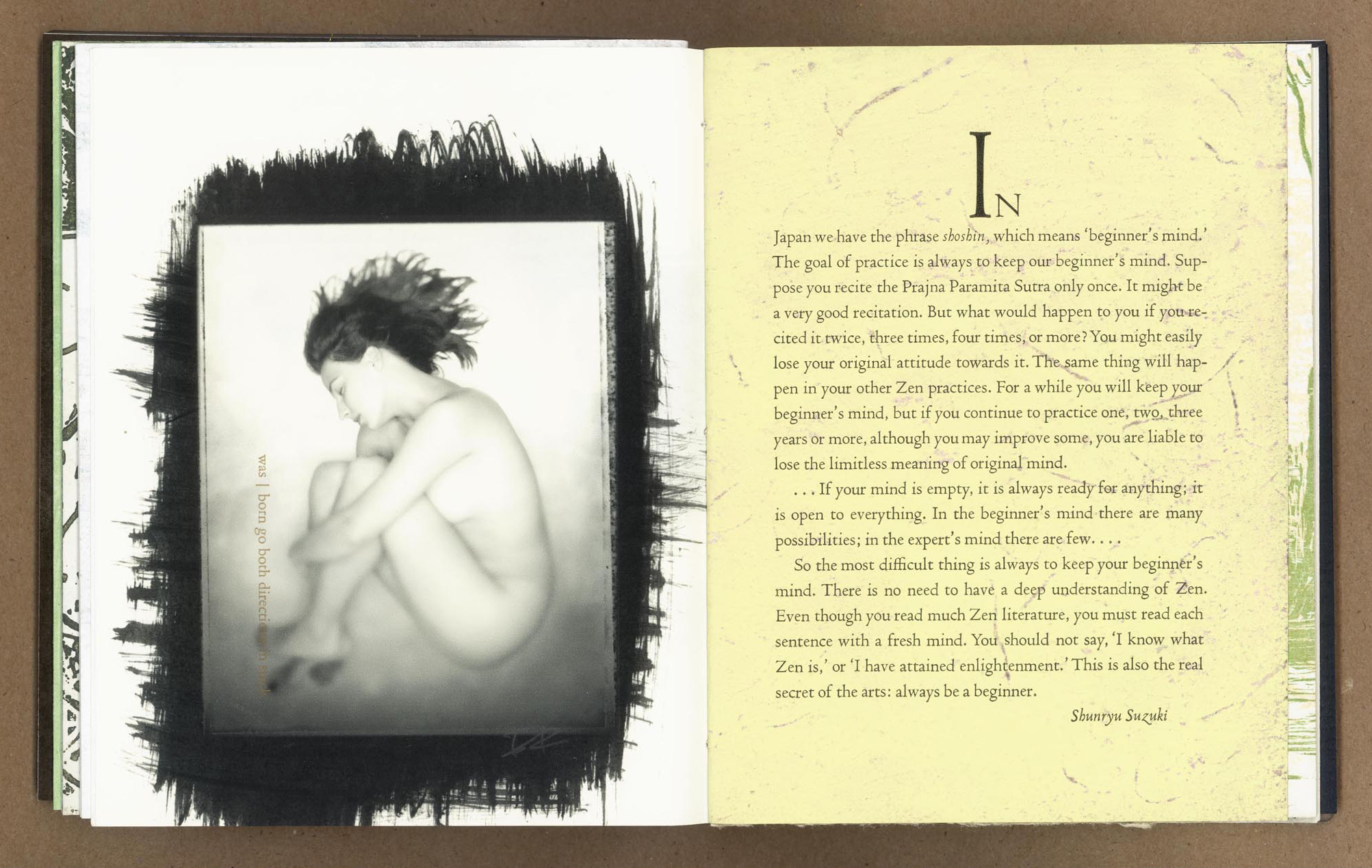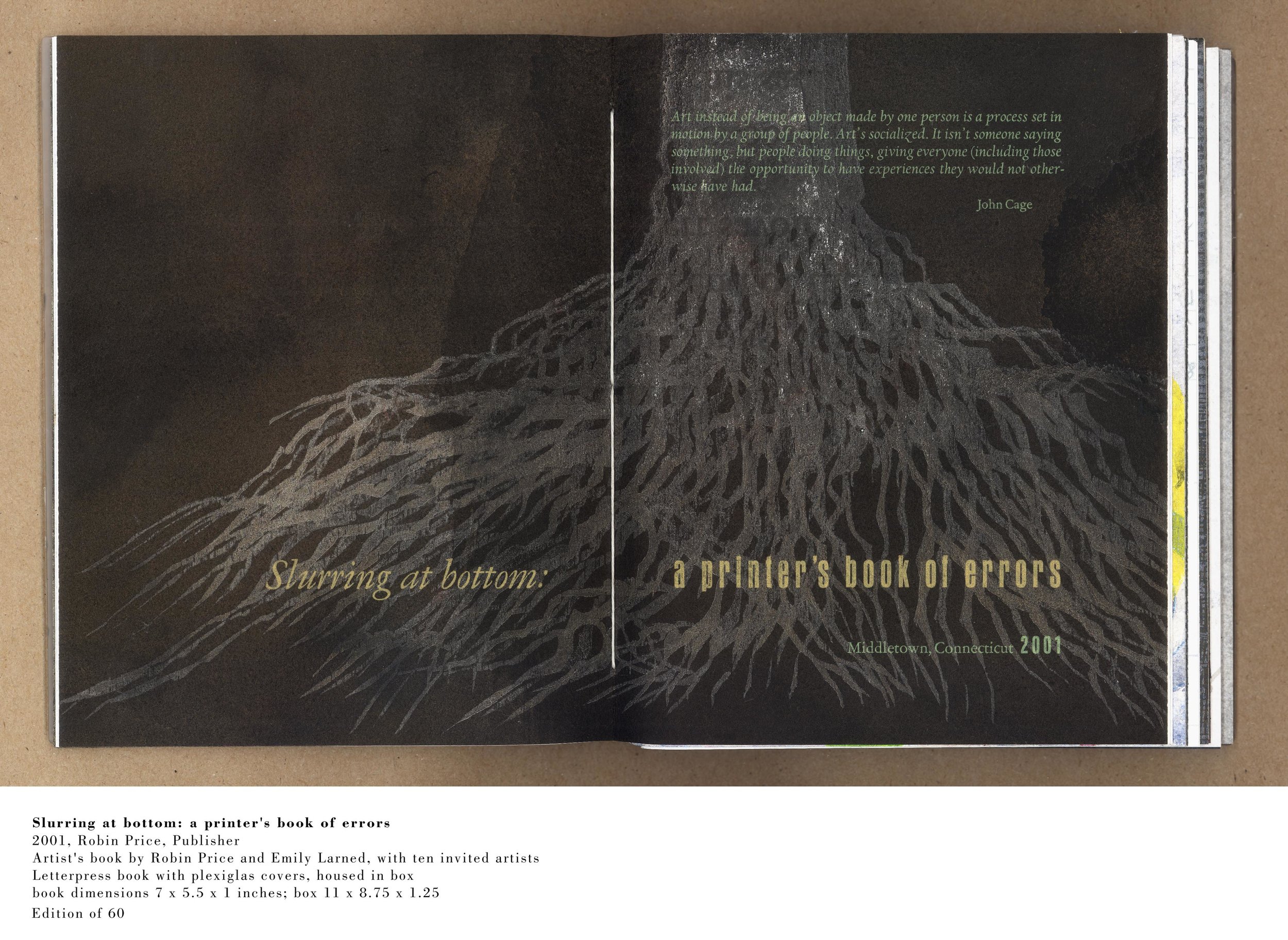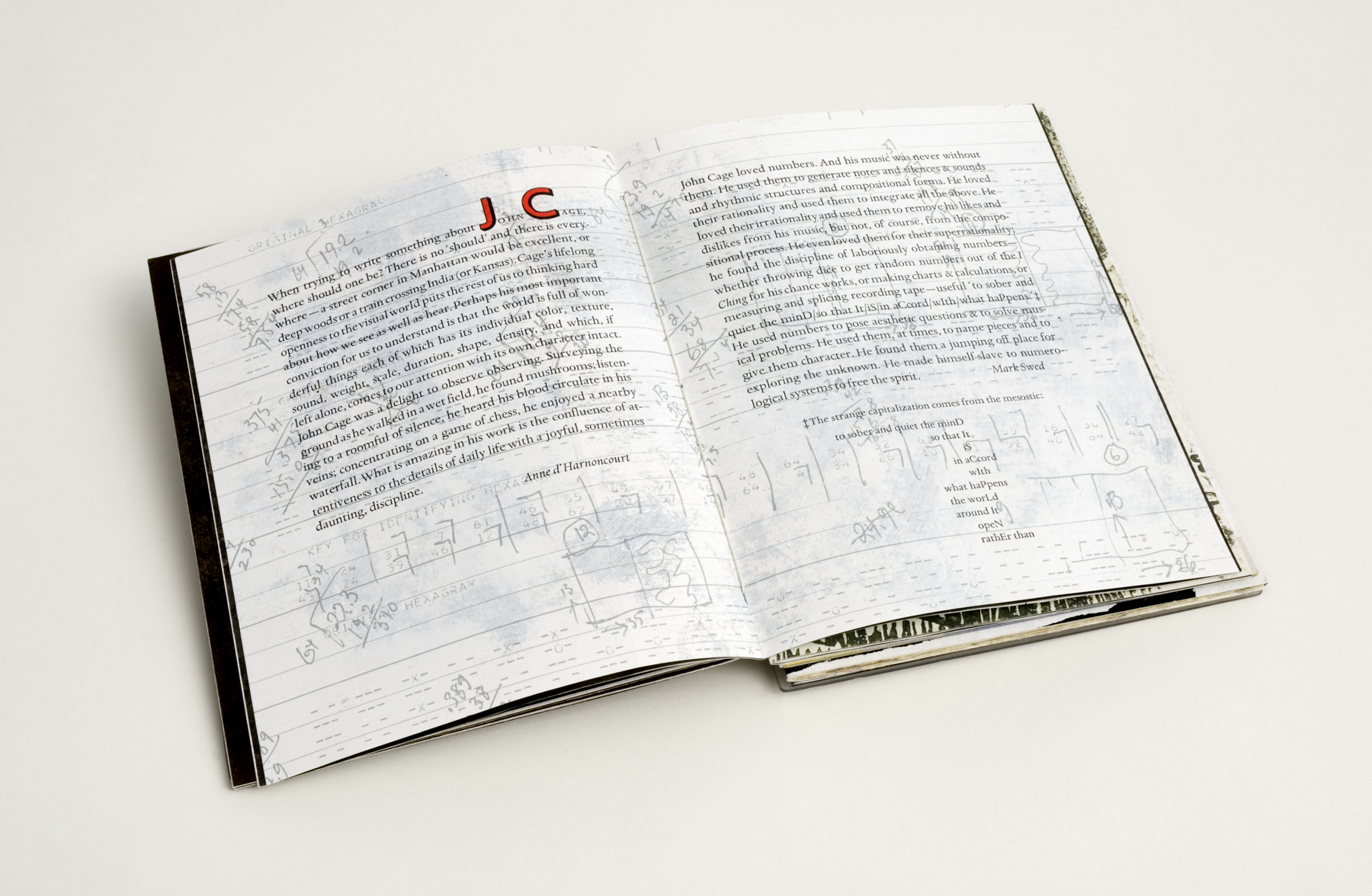





Slurring at Bottom
The endless fiddling with ink or packing, letterspacing, or tiny bits of gunk on the surface of a handmade sheet of paper; the weary acceptance of a never-quite-perfect printed page; the extreme emphasis on labor that ideally should be meditative but too often isn’t: these are the demands we place on ourselves as we practice the art/craft of fine printing. Slurring at bottom began as my personal search for a way out of that, using the same means—those labor-intensive activities done by hand—but mixed with a new approach, to express my protest and gather possible remedies. The raw material was literally my past mistakes—sheets rejected from previous editions, work-up sheets, etc—which were then transformed into new surfaces onto which other artists could play, or new text could be printed. One sheet from each of the ten invited artists is in every copy of the book; techniques used include collage, drawing, fireworks, painting, photography, printmaking, and sewing. The accompanying texts were mostly excerpts from previously published writing, and included authors such as John Cage, Bern Porter, and Basho, and subjects such as friendship quilts, Dada art, and the Japanese game of renga. Chance, randomness, and the relinquishing of control were wholeheartedly embraced, as was the opportunity to collaborate with the young Emily K. Larned. Our final delight was in hand-selecting the collation of each copy (or rather, the middle four signatures of a six-signature binding), so that no two copies are alike in either sequence or in pages from the artists (because they, too, varied within the “edition”). Out of print.
6.75 x 5.5 inches; 80 pages; edition of 60 [2001]
